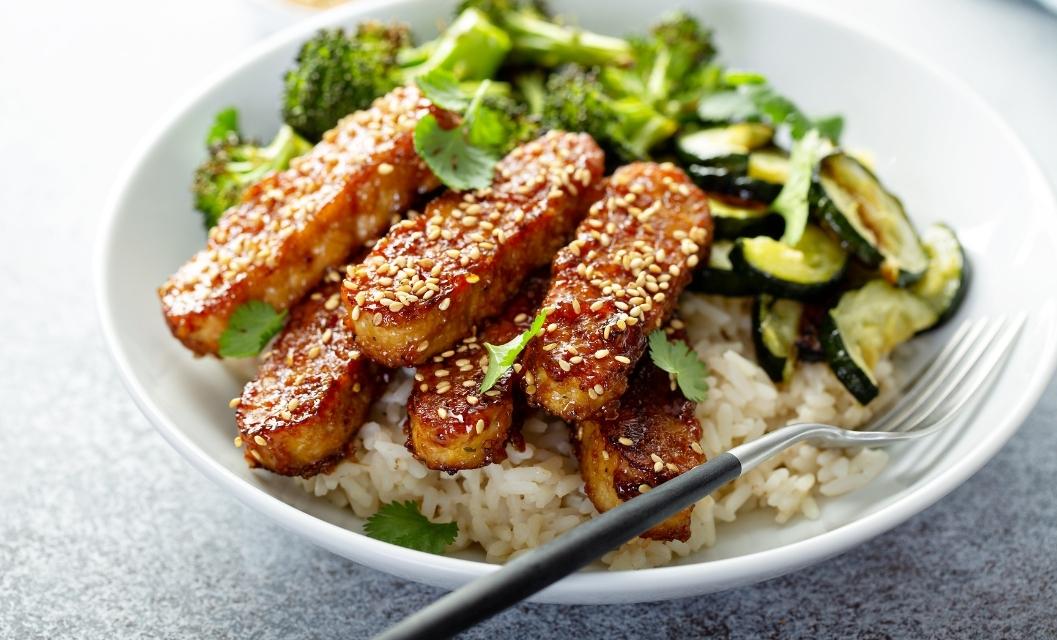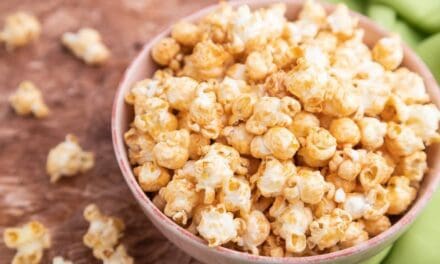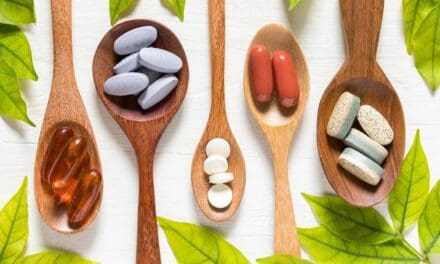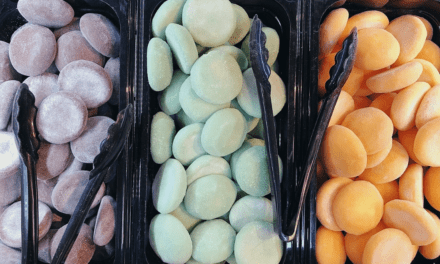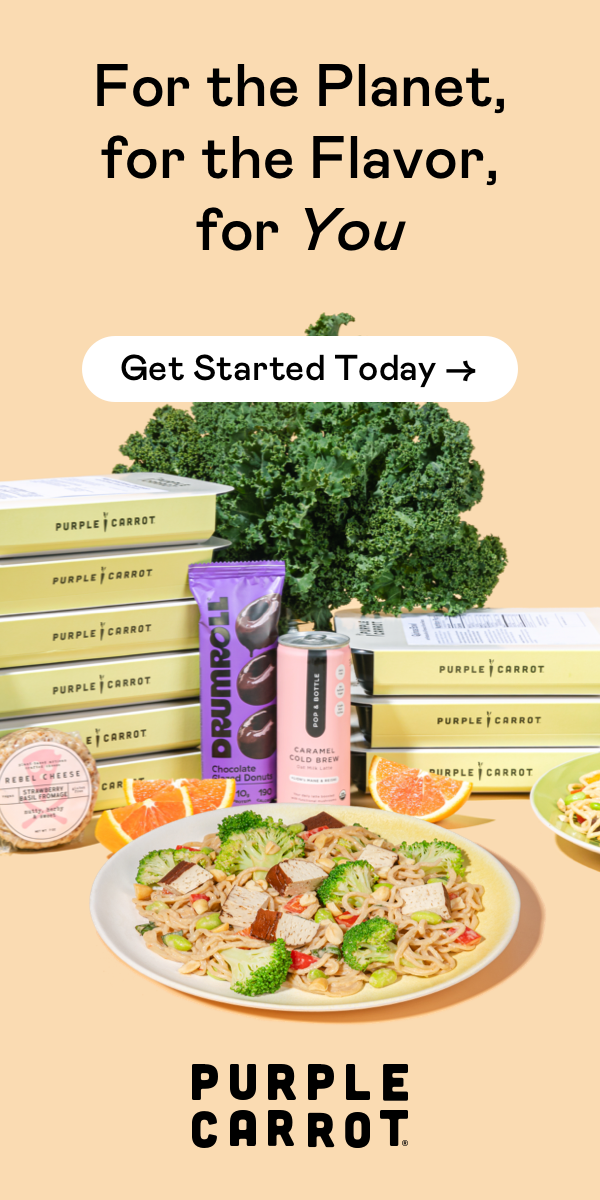There are plenty of plant-based protein sources to choose from if you’re trying to eat less animal protein for your health, the environment, or the animals. Here are seven of the best sources you can add to your plate.
1. Seitan
Seitan is a high-protein wheat gluten meat alternative. It’s often called “wheat meat” because of its texture and flavor. If you add mock meat to your plate, you may have already had seitan without realizing it. It has a texture and flavor that resembles meat and tastes more like chicken than beef or pork. You can buy it ready-made at many grocery stores or make your own.
How to use it? Seitan has a slightly chewy texture and works well in salads, tacos, stir-fries, and wraps. Of course, if you have celiac or gluten sensitivity, seitan is off-limits. But if you don’t, you might enjoy its versatility. With 25 grams of protein per 100 grams, it’s one of the best sources of plant-based protein around.
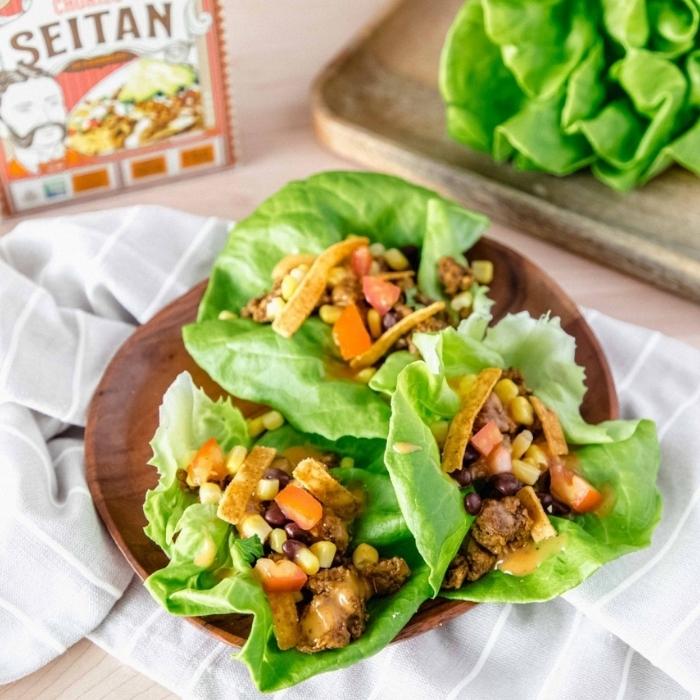
Upton’s is probably one of the most popular brands of seitan on the market. | Photo: Uptons Naturals / Instagram @uptonsnaturals
2. Tempeh
Tempeh, a soy-based food, is a plant-based protein powerhouse! Tempeh rocks from a protein perspective with 19 grams of protein per 100-gram serving. It’s a fermented form of soy that contains probiotics and is also rich in fiber. Keep in mind that if you buy it packaged, it may be pasteurized, which kills the gut-friendly bacteria. It’s also a good source of magnesium, calcium, iron, and phosphorus.
Tempeh is popular as a meat alternative and is an excellent way to get protein on your plate without eating meat. However, some people find tempeh to be a little bitter. A trick to remedy that is to steam the tempeh for a few minutes before cooking it as you usually would. Tempeh absorbs sauces well, so don’t be afraid to experiment with different flavors and marinades. It’s delicious on its own or with your favorite vegetables and spices, but you can also use it in sandwiches or stir-fries. If you’re looking for a meat substitute high in protein and low in fat, tempeh is your answer.
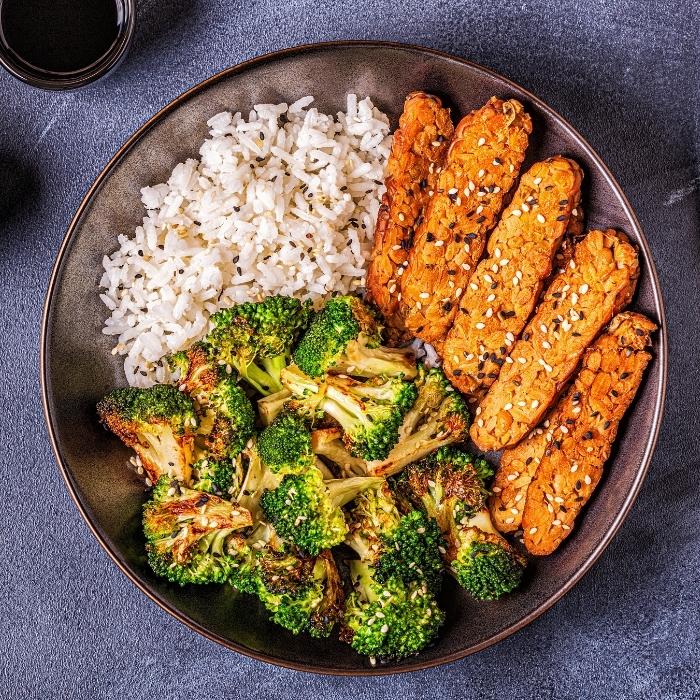
Fried tempeh with rice and broccoli.
3. Edamame
Edamame is the Japanese term for green soybeans harvested while they are still immature. This tasty bean is popular in Japanese restaurants as an appetizer, but you can also enjoy it at home if you’re looking for a protein-rich snack. You’ll get B-vitamins, vitamin E, and calcium when you snack on edamame. It sure beats the processed snacks out there!
One way to eat them is to steam the beans and serve them in their pods with a dusting of sea salt or a splash of soy sauce. Just one cup of edamame contains 12 grams of protein, and it’s rich in fiber. You won’t get that kind of fiber from a piece of meat (or any fiber at all).
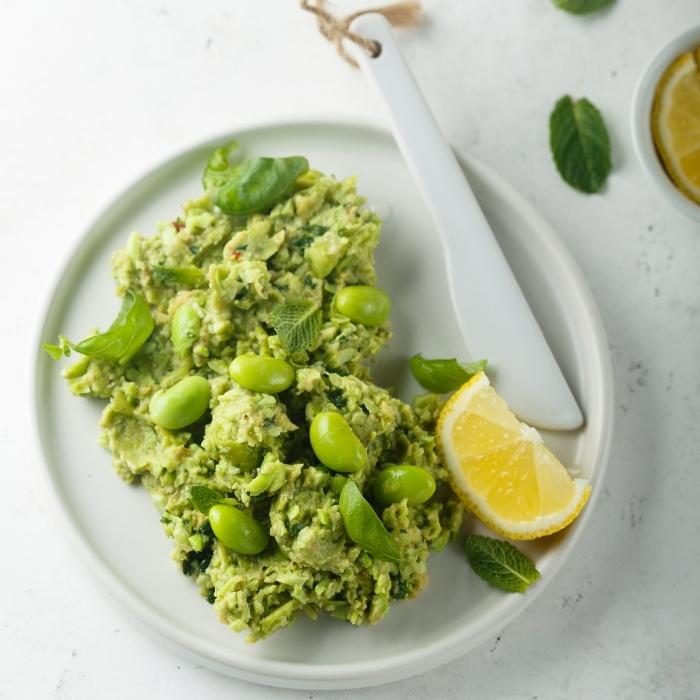
Edamame bean dip is another delicious way to try this protein-packed snack.
4. Legumes
Beans, peas, peanuts, and lentils are all excellent sources of plant-based protein. A one-cup serving of lentils provides about 15 grams of protein, B-vitamins, and minerals. In addition, lentils are high in fiber, which can help keep you feeling satisfied longer after meals.
Don’t forget about beans. You can choose various protein-rich beans, including black beans, garbanzo beans (chickpeas), pinto beans, navy beans, and kidney beans. Many beans, especially small red beans and black beans, are high in antioxidants and compounds that reduce inflammation.
How can you enjoy legumes? Add beans to salads, soups, or even eat them solo for a quick snack or side dish. Cooked beans and lentils are also a great alternative to meat in recipes, and you can prepare them in many ways.
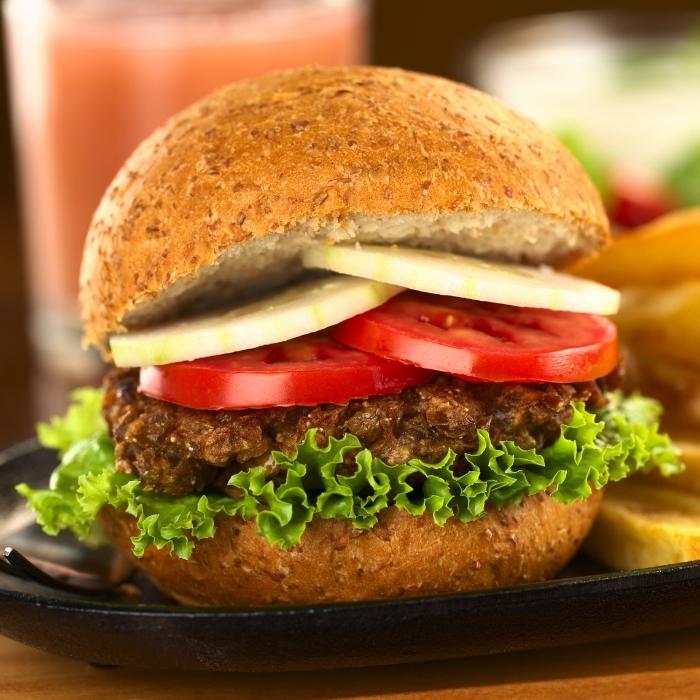
Lentil burgers are a filling way to pack in a serving of plant-based protein.
5. Hemp Hearts
Hemp hearts are an excellent plant-based source of protein with essential fatty acids that promote heart health. Hemp contains all 20 amino acids, including nine that the body can’t produce on its own, making it a complete protein source. Plus, you’ll get plant-based omega-3 fatty acids, protein, and fiber. Would you believe there are almost 10 grams of protein in 3 tablespoons of hemp seeds? That’s a sweet deal.
Ready to enjoy their benefits? Add hemp hearts to your favorite smoothies or bowl of steel-cut oats in the morning and you’ll get an extra bit of nutty crunch. Sprinkle them on top of your salad too!
Hemp hearts are a nutrient-dense addition to any baked good recipe — they make cookies, cakes, and breads more filling while adding protein and healthy fats. Experiment with these tiny seeds with a nutty flavor.
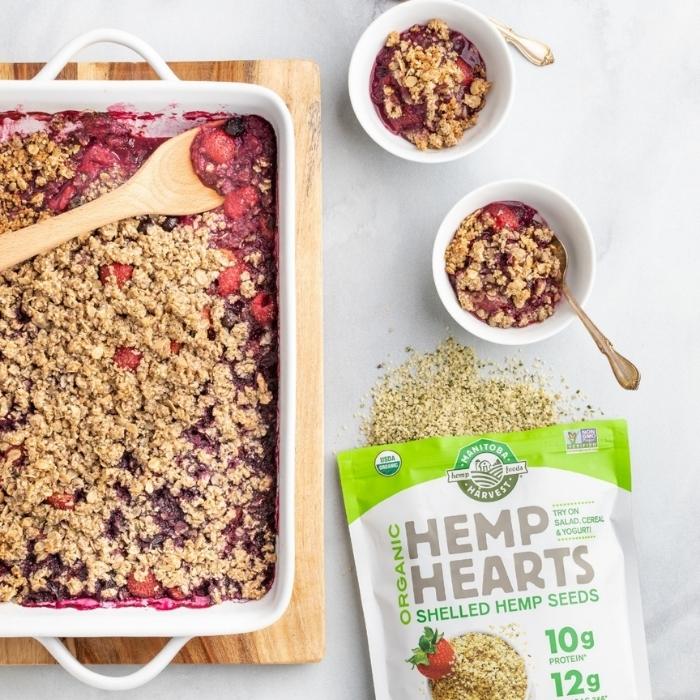
Hemp hearts are a nutrient-dense addition to any baked good recipe. | Photo: Manitoba Harvest / Instagram @manitobaharvest
6. Quinoa
Quinoa is a grain substitute packed with naturally occurring proteins and iron. One hundred grams of quinoa contains almost 5 grams of protein and more fiber than brown rice. Plus, it contains B-vitamins, iron, magnesium, zinc, and copper. You can use quinoa as a replacement for rice and even make a quinoa porridge as a substitute for oatmeal.
You can use quinoa like any other grain or starch. It’s perfect in salads or as a side dish, and because of its mild flavor, it takes on other flavors that you cook with it. Try toasting it for extra crunch!
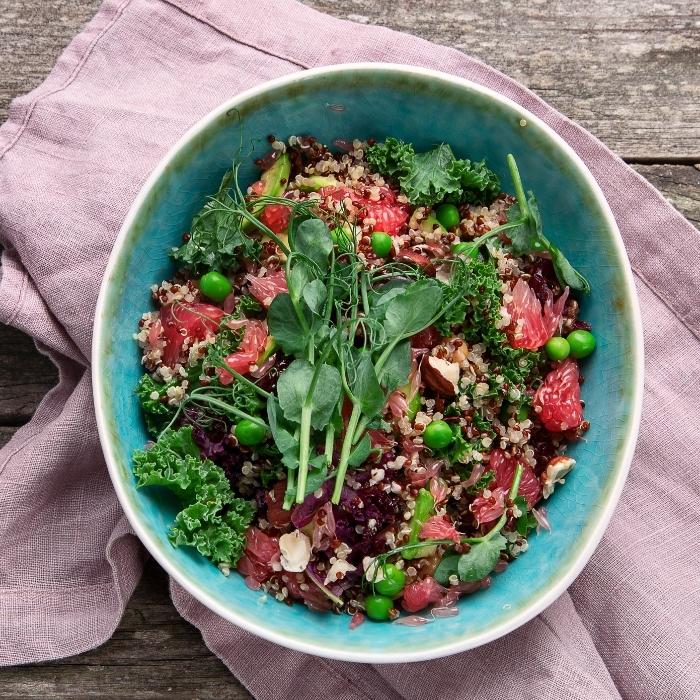
Add cooked quinoa to salads for an extra boost of protein and fiber.
7. Chia Seeds
Chia seeds are another great source of plant-based protein that you can add to meals. The best part about these seeds is that they have a ton of omega-3 fatty acids.
You can add chia seeds to your diet for more than just protein–they’re perfect for boosting your energy levels throughout the day. Plus, they contain significant quantities of calcium and magnesium.
How can you enjoy them? Add chia seeds to smoothies, oatmeal, and yogurt for an easy way to get at least one serving per day. Two to three tablespoons of chia seeds have more protein than a large egg.
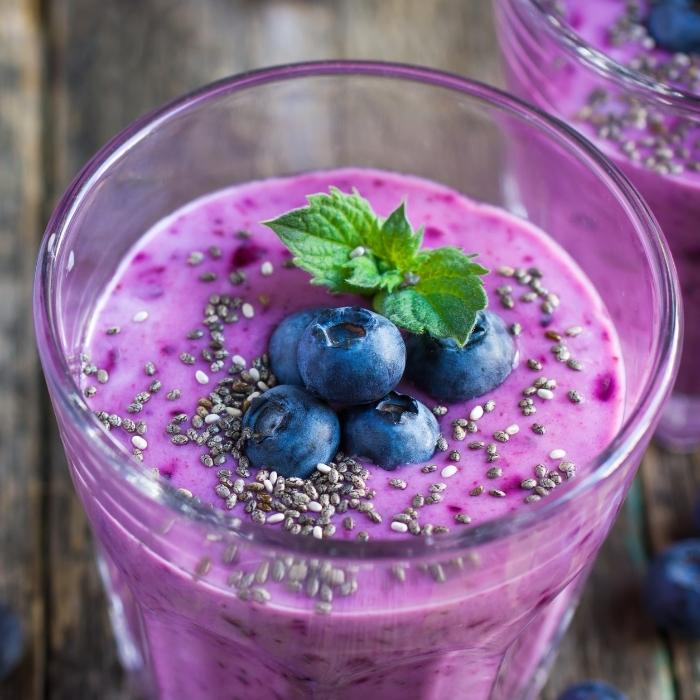
Chia seeds stabilize your blood sugar and give you energy because of their high protein, healthy fat, and fiber content.
The Bottom Line
If you’re trying to reduce animal-based protein in your diet for health, the animals, or for the planet, you have alternatives. Now you know what they are. Experiment and see which of these plant-based protein sources you enjoy the most, or try them all!

